Print illustration continued to grow as time went on, with advanced technologies allowing for increasingly better image reproduction. Illustrators on both sides of the Atlantic were becoming household names!
Charles Dana Gibson, At the Beach
Artists such as Charles Dana Gibson were both depicting and creating the American culture of the time. His pen-and-ink drawings were reproduced in magazines across the globe, and his images found their way into both American homes and the American consciousness. His iconic ink drawing of the “Gibson Girl” was, he said, a composite of “thousands of American girls.” The image shaped the face of American femininity of his generation.
Charles Dana Gibson, The Gibson Girl
During the years between 1865 and 1917, a time known as the “Golden Age of Illustration,” books and periodicals were the world’s major source of entertainment. This stands as the publishing industry’s most dramatic period of worldwide expansion, and of course that expansion can be seen in the incredible use of inking techniques used by the artists of the time.
Franklin Booth, A Continent Is Bridged, originally an illustration commemorating the 25th anniversary of transcontinental telephone service. Note the similarity in technique to the work of Albrect Durer.
Hatching is as relevant to illustration now as it was at the advent of the print industry, though most artists use the technique in combination with some kind of coloring medium, either traditional or digital.
Mercer Mayer, One Monster After Another, pen, ink, and watercolor
Jeremy Bastian is an American comic book creator and illustrator best known for the book Cursed Pirate Girl. Each illustration is created at a 1:1 scale using a very fine brush and ink. His painstakingly rendered drawings are reminiscent of Dürer in their skillful use of hatching technique, but are perhaps more strongly connected with the pen-and-ink work of the Golden Age illustrators he cites as his influences, Rackham and Tenniel, who we will look at later in this course.
Look at the gallery of Bastian’s work. When you look at Bastian’s illustrations, take the time to zoom in and really examine his use of line to create value and describe form. Also note how expressive and alive his lines are.
- Cursed Pirate Girl
Jeremy Bastian, illustrations from Cursed Pirate Girl
Here you can take a look at a one-page comic created by Bastian for the Eisner-Award -winning anthology Little Nemo in Slumberland, an homage by modern cartoonists to the work of Winsor McKay.

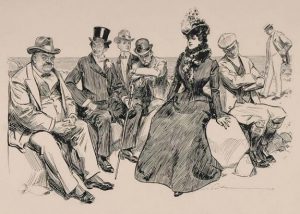
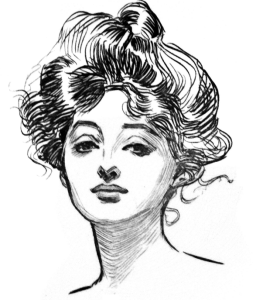
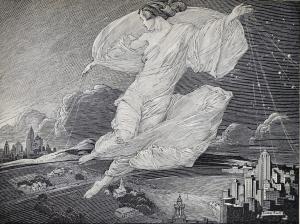
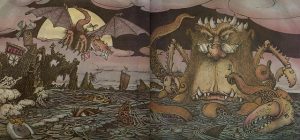
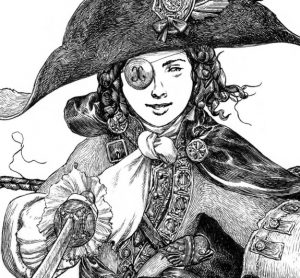
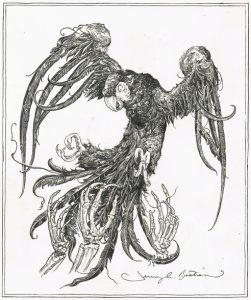

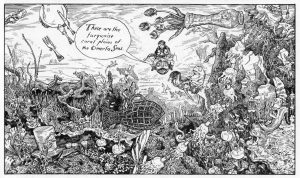
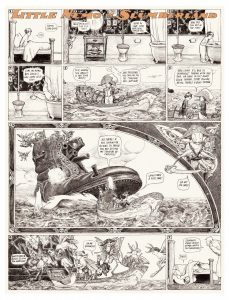



From reading these blogs, these artists really inspired me. The fact that they’re using ink to make the drawing lively instead of using pencil just amazes me. The details in the pictures stand out and when it comes to the color it makes the picture stronger.Another thing that I realize is that these artist use is a story behind their drawings. In other words what I learned from that is when drawing make sure there’s a meaning behind anything you draw to make the drawing significant.
Looking at Charles Dana Gibson work it really catches my attention how he’s so steady with his line control. He goes from dark to light with hatching and cross hatching. I really enjoy looking at the Gibson girl drawing as it shows a strong represtation of woman during this time of the latest fad.
Same as Dürer’s it’s so detailed that I do not think I am capable of doing! Jeremy Bastian’s work really makes my eye drags on to his work because of this cartoon of this pirates makes me mesmerize and how much hours had spent on. They are so professional that it doesn’t looks like they done any mistakes!